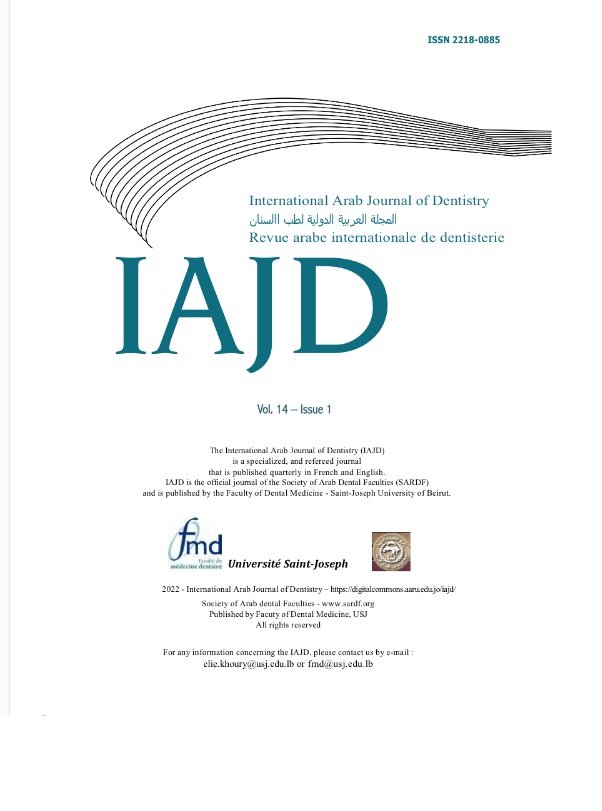Abstract
Background: Anchorage is an important consideration for successful orthodontic treatment. Skeletal anchorage by miniscrews provided better anchorage control then the ordinary extra-oral and intra-oral appliances. However, the stability of the miniscrews is still questionable since they might move under orthodontic loading. Objectives: The aim of this study was to evaluate the effect of Low Level Laser on the miniscrew displacement when subjected to orthodontic force during canine retraction using CBCT.
Methods: Twelve patients who required bilateral extraction of upper first premolar and absolute anchorage were recruited from the outpatient clinics of the Department of Orthodontics, Faculty of Dentistry, Beirut Arab University of age ranging 14-28 years. Twenty-four miniscrews were assessed; two miniscrews were inserted into the buccal alveolar bone between the second premolar and first molar on the right and left side for each patient in a 60o oblique direction at the mucogingival junction to avoid root injury. They were divided into 2 sides; test side and a control side, the test side received 4 application of low-level laser therapy during the first twelve days of insertion with a 60 seconds for each application. While the control side did not receive any laser application. After waiting a period of twelve days from miniscrew insertion to allow for soft tissue healing, the upper right and left canines were retracted by 150g of nickel-titanium (NiTi) closed coil springs. A cone-beam computed tomography was taken to evaluate the miniscrew position before application of the force at baseline (T0) and after canine retraction at 6 months (T1).
Results: There was no statistically significant difference of miniscrew head and tail displacements of the test side and a sta- tistically significant difference of the heads for the control sides when compared to baseline.
Conclusions: Miniscrews used in the current study with the suggested protocol underwent non-significant displacement when using low level laser. The miniscrews remained stable throughout the follow-up period (6 month) without any significant displacement on the test side.

